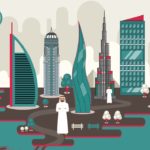
The advent of cellular phones has undoubtedly revolutionized the communication process to a large extent, adding to that the burgeoning social media sites also changed the way one used to communicate. With the introduction of text messaging feature, conversation over text messages become popular among a large number of people.
However, it has greatly influenced kids and teenagers who viewed the new add-on as “cool” and became obsessed with it. In over a decade, teenagers using cell phones and other gadgets such as tablets and laptops have surged manifold.
It has also been found that children and teenagers prefer texting to talking over their cellular devices. Adolescents like to speak with their parents over the phone, whereas they love to text to their friends. While texting, the teenagers don’t care to focus on the basic spellings and grammar and even sometimes misspell some words deliberately to appear “cool”.
But this can cause a great harm to their education as some teenagers tend to write the same way they text messages. They cannot help it because after texting messages for a long period of time day in day out, the writing style is stored in their brain permanently and they commit the mistakes without their knowledge.
Many people are against texting as they believe that excessive texting weakens the mental ability of teenagers by making them commit mistakes in spellings and grammar.
Also the latest fad of using abbreviations and short forms in text messaging such as LOL ( laughing out loud), ROFL (rolling on the floor laughing), TY (thank you), TC (take care), etc. It has been found out that the students who regularly use abbreviations and short forms while texting are bad spellers and perform below average in grammar tests.
The text style of writing has also been found to crop up in teenager students’ assignments and tests. The short-hand writing style used by teenagers in their text messages has badly impacted their literacy. Apart from the short style of writing, the large number of problems found in punctuations, spellings, grammar, and language have impacted the literacy of the teenage students.
Apart from affecting students’ literacy, the problems associated with excessive text messaging also have a negative impact on teachers as they have to rate the assignments and tests which at times are found to be written in text messaging style.
A 2015 report released by Internet and American Life Project, a unit of Pew Research Center, stated that an average American teenage student sends nearly 50 text messages on a daily basis. Statistically, the maximum number of sent text messages is sent by teenagers compared with the people of all age groups.
The report also found out that 75% of American teenagers own mobile phones in 2015, whereas just 45% American teenagers owned mobile phones in 2004. Fifty-four percent of the total American teenagers who have their own mobile phones text each day.
A survey found out that while teenagers make no more than 203 calls from their cell phones in a month on an average, they text nearly 2272 times during the corresponding period.
The same survey cited that about 31% of the teens surveyed send more than 100 text messages daily, 16% of the teens send 51 to 100 text messages, 28% of the teens send 11 to 50 text messages, 22% of the teens send 1 to 10 text messages, while only 3% send no text messages at all.
A separate research conducted by an independent firm found that an American teenager sends nearly 1800 text each month on an average and it stated that the number is expected to be much more now.
Contributed By: www.myprivatetutor.my
Justin Goh
Latest posts by Justin Goh (see all)
- A List of Habits and Tricks to Enhance Your General Knowledge - June 5, 2017
- Master Digital Skills With Your Master Degree - March 23, 2017
- 3 e-Learning Trends That are Changing the Way Your Child Learns - January 30, 2017














